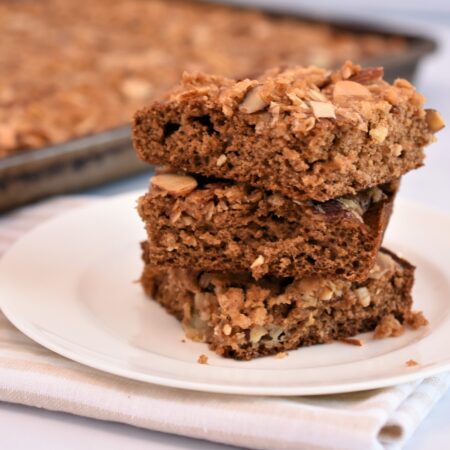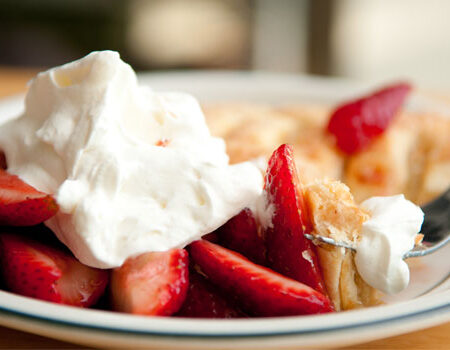What is Baking Soda?
Baking soda is a versatile pantry ingredient that has many uses around the house. You might use it most when baking to help your doughs and batters rise, giving them the light, airy texture we know and love in cakes, cookies, and muffins. But what exactly is baking soda, and how does it help make delicious baked goods? We’re answering all things baking soda for you.
The Science of Baking Soda
Baking soda is also known as sodium bicarbonate. When you mix baking soda with an acidic ingredient—like vinegar, lemon juice, or yogurt—it starts a chemical reaction. The baking soda reacts with the acid, producing carbon dioxide gas. These bubbles of gas get trapped in the batter, causing it to rise and become fluffy.
For example, think of a classic chocolate cake recipe that calls for baking soda and buttermilk. The buttermilk (acidic) reacts with the baking soda (alkaline), and the carbon dioxide bubbles that form help the cake rise. Without this reaction, the cake would be dense and flat instead of light and airy. Definitely not the texture you or your loved ones are looking for when indulging in a cake!
Why It’s Important in Recipes
Baking soda plays a key role in many recipes because of its ability to create rise and texture, but also for its impact on the flavor. Here’s the ways it assists in baking:
- Leavening Agent: As mentioned, baking soda helps baked goods rise. Without it, many recipes that rely on it would fall flat—literally! Unlike baking powder, which contains both an acid and a base, baking soda only has the base and needs an acid to activate it. This is often why you see baking soda and baking powder used together in recipes that don’t have an acidic ingredient like citrus juice or yogurt – the acid in baking powder can be enough for the baking soda to do its thing!
- Neutralizing Acidity: Another key reason baking soda is used in baking is to balance out acidity. Some ingredients, like cocoa powder, are naturally acidic. Adding baking soda helps neutralize that acidity and create a more balanced flavor profile. This is why many chocolate recipes call for both baking soda and an ingredient like buttermilk or vinegar—it helps smooth out the flavors and brings out the richness of the chocolate (yum!).
- Golden Color and Flavor: When baking soda reacts with acid, it not only produces carbon dioxide gas but also contributes to the Maillard reaction, which is responsible for the golden-brown color and complex flavors in baked goods. This is especially noticeable in cookies and cakes where a slight caramelization of sugars happens, giving them that irresistible color and flavor.
- Texture and Tenderness: Baking soda can also affect the texture of baked goods. It helps create a soft, tender crumb by breaking down the starches and proteins in the batter. This is especially important in cookies, where you want them to be chewy, and in cakes, where you want them to be fluffy and moist. After all, no one wants a stodgy baked good.
Why You Can’t Always Swap Baking Soda with Baking Powder
Although both baking soda and baking powder are leavening agents, they work differently and aren’t always interchangeable. Baking powder already contains an acid (usually cream of tartar), so it doesn’t need an acidic ingredient in the recipe to activate it. Baking soda, on the other hand, requires an acid to create the leavening reaction.
If a recipe calls for baking soda, it’s typically because there’s already an acidic ingredient included. Swapping baking powder for baking soda without adjusting the other ingredients will not only result in a less-than-perfect texture, but it could also throw off the flavor balance, making things too bitter or overly tangy. So, stick to the recipe’s instructions when it comes to which leavening agent to use so you get a beautiful texture, every time.
Baking Soda – a Powerhouse in the Kitchen
Baking soda isn’t just a simple pantry item—it’s a staple in the kitchen. Its ability to help baked goods rise, neutralize acidity, and contribute to the flavor and texture makes it an essential ingredient in many recipes. From light, fluffy cakes to chewy cookies and tender pancakes, baking soda’s unique properties are behind the magic of so many beloved treats.
Need the perfect baking soda for your next recipe? We’ve got you covered.


